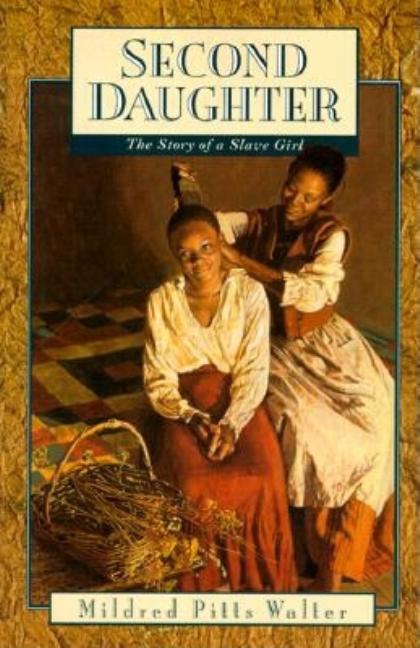Book Descriptions
for Second Daughter by Mildred Pitts Walter
From The Jane Addams Children's Book Award
In 1781, long before the Civil War and the Emancipation Proclamation, Bett and Brom, enslaved African American husband and wife, sued their owners for their freedom and won their case. Told through the eyes of Aissa, Bett's younger sister, this historical novel blends real events with realistic details of the day-to-day lives of Bett, Brom, their son, and Aissa. Shedding light and humanity on these unprecedented legal proceedings, Aissa's narrative provokes deep thought about just who the Constitution protects and what it means to declare that equality and freedom for all are the law of the land. Remarkable for its historical significance, the case, especially as imagined here by African American Walter, portends the painful intensity of the countless legal battles fought to win full rights for African Americans through the centuries and into the present.
The Jane Addams Children’s Book Award: Honoring Peace and Social Justice in Children’s Books Since 1953. © Scarecrow Press, 2013. Used with permission.
From the Publisher
Set during the American Revolution and based on a true story, Elizabeth Freeman, a young slave, sues for her freedom—and wins
Sheffield, Massachusetts. Six-year-old Aissa and her older sister, Elizabeth, work as slaves in the home of their owners—Master and Mistress Anna. Raised by Elizabeth after their mother died, and chafing under the yoke of bondage, Aissa is a natural-born rebel. Elizabeth, nicknamed Bett by her owners, is more accepting of her fate in spite of growing anti-slavery sentiment. She marries Josiah Freeman, a freed black man, and they have a child. Then on July 4, 1776, America achieves her dream of independence from England, and in 1780, Massachusetts drafts its own constitution, establishing a bill of rights. When Mistress Anna, angered by Aissa’s defiance, threatens her with a hot coal shovel, Bett takes the blow instead, and is severely burned. She walks out of the house, vowing never to come back—and takes her owners to court.
Second Daughter is both riveting historical fiction and rousing courtroom drama about slavery, justice, courage, and the unconquerable love between two sisters.
Sheffield, Massachusetts. Six-year-old Aissa and her older sister, Elizabeth, work as slaves in the home of their owners—Master and Mistress Anna. Raised by Elizabeth after their mother died, and chafing under the yoke of bondage, Aissa is a natural-born rebel. Elizabeth, nicknamed Bett by her owners, is more accepting of her fate in spite of growing anti-slavery sentiment. She marries Josiah Freeman, a freed black man, and they have a child. Then on July 4, 1776, America achieves her dream of independence from England, and in 1780, Massachusetts drafts its own constitution, establishing a bill of rights. When Mistress Anna, angered by Aissa’s defiance, threatens her with a hot coal shovel, Bett takes the blow instead, and is severely burned. She walks out of the house, vowing never to come back—and takes her owners to court.
Second Daughter is both riveting historical fiction and rousing courtroom drama about slavery, justice, courage, and the unconquerable love between two sisters.
Publisher description retrieved from Google Books.


